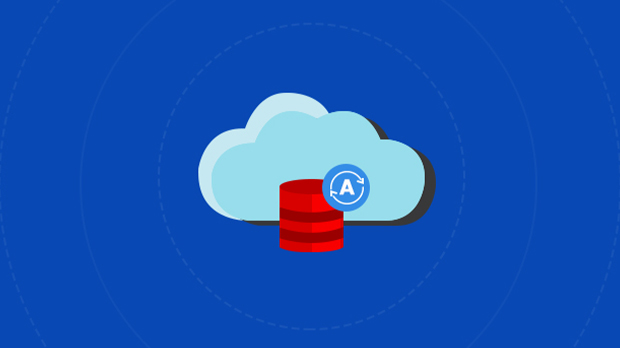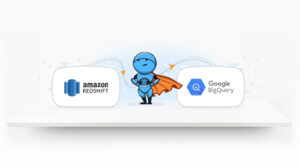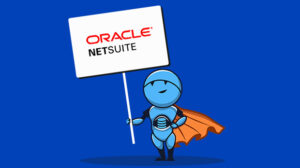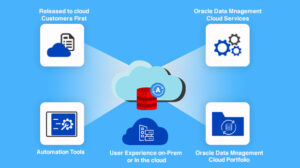Oracle is considered one of the most innovative databases due to its Autonomous Database feature. The advantage of using the Autonomous Database is that it utilizes machine learning to automate updates, security, backups, database tuning, and much more. In addition, unlike traditional databases, Autonomous Database works without human intervention, which makes them more secure. Before you choose Oracle DB, here are a few things you need to keep in mind about Oracle’s Autonomous Database.
7 Amazing Features of Oracle Autonomous Database
Autoscaling for Serverless Deployments
For decades, Oracle has invested heavily in its Real Application Cluster technology. Oracle is unmatched in the market when it comes to the technology available in the market to address planned and unplanned downtime. RAC is one of the add-ons for the Oracle database that allows new nodes to be added or removed to an Oracle cluster, and that too, without a service outage, unlike Redshift, where you may experience some downtime during cluster resize. A simple setup allows the user to scale up or down the computer needed for ADB. This feature is beneficial for workloads that do not require computing to be up and always running and for workloads that have a seasonality associated with them, allowing uninterrupted operations despite a spike in workload. There are limits to what extent the instance can be scaled, and you can find those details here.
Automated Patching and Upgrades
Patches and Upgrades are a common feature of any software, and databases are no different. Applying patches or upgrades to a relational database has long been an activity that demanded a lot of planning and coordination across various teams because of the potential downtime involved and the impact on the business caused by the code released in the patch. With ADB, Oracle has completely automated patches and alleviated the burden of patch management from the service users. Patches and upgrades are performed seamlessly without any interruption to the service. Over the last couple of years, changes have been made to how Oracle DB software patches are released. Patch releases occur more frequently now. As a result, less code gets changed with each patch, which automatically reduces the impact on the system.
Automated Tuning
ADB has features that auto-tune the queries being run on the service. For those familiar with the Oracle database, Oracle has had many add-on features in the past, like AWR reports, diagnostics packs, and tuning packs. However, Oracle has combined the power of these services to provide automated tuning capabilities to the service, wherein several tuning techniques get auto applied on a query so that the users always get the best performance from the system. Performance tuning has been a time-consuming activity since the time databases were introduced. By automating tuning, Oracle has solved one of the toughest challenges and, better yet, made that a feature in the ADB service.
Oracle Application Express (APEX)
This feature is one of the hidden gems of the Oracle database that, surprisingly, even many developers of the Oracle database have limited exposure. ADB supports Oracle APEX, although with a few limitations that you can read about here. Users can quickly build web applications on the database without maintaining any additional infrastructure or application servers and using an intuitive drag-and-drop interface. This feature allows a traditional database developer to do the role of an application developer and cater to the application needs of various departments, automating reporting tasks.
Partition Management
Partitioning data plays a significant role in the performance of database queries and the cost of running the database infrastructure. The table usage patterns must be thoroughly understood before deciding on a partitioning strategy for the database. Oracle’s Information lifecycle management pack has many features that enable Oracle to detect hot, warm, and cold data based on the access frequency of these data blocks. When combined with tiered storage, ILM can allow for hot data to be made available on tier 1 storage and least used data on the cheapest storage available to the database, and so on.
Partitioning also allows different compression strategies to be applied to different partition types, thus saving businesses from having to buy extra storage prematurely. You can read more about ILM here. Fortunately, ADB has made partition management autonomous. I.e., Oracle determines what partitions are right for your workload, moves your data around under the covers without any downtime, and ensures you always get the best performance possible while keeping your storage costs low. But, of course, if you are a power user who likes to take control of partition management, you also have that flexibility.
Compression
For many years, Oracle offered advanced compression as an add-on to the Oracle database enterprise edition. Oracle’s advanced compression package offers various compression techniques that apply to diverse types of data in the system. Compression is enabled in ADB by default. In addition, the autonomous Data Warehouse uses Hybrid Columnar Compression (HCC) for all tables by default. If you are a power user who likes to take control of compression management, you also have that flexibility. By combining the power of automated partition management and compression management, Oracle ensures that you are not overpaying for storage and getting the optimal read and write performance from your database service.
Security
Security has always been the hallmark of the Oracle database. Oracle offers unparalleled security features in its database, fulfilling the security demands of the organizations with the most stringent security standards. Oracle has bundled the various security options available within the enterprise edition database into an Oracle data-safe package. Oracle DataSafe works with ADB and offers
Sensitive data discovery
Automatically scan the database for any sensitive data based on established patterns and mark them for review and further action.
Data Masking
Mask sensitive data from leaking to non-production environments like development, training, and testing, and decrease the likelihood of a data breach. Data masking requires no coding and preserves all the data relationships. For example, masked customer emails will not break any reports that rely on customer emails.
User Activity Auditing and Reporting
Track user activity automatically and raise alerts on risky actions. Out-of-the-box audit reporting makes it easy not only to identify and mitigate issues posed by risky user activity but also to reduce the costs of compliance.
User Risk Assessment
Identify users with the highest risk, review privileges, and automatically capture activity performed by those users. Apply appropriate policies to ensure users with necessary privileges have secured access to strong passwords and adhere to password policies.
Database Security Assessment
This feature lights the database’s security. It presents timely recommendations on actions that can be taken to ensure that database security is not compromised.
Security is often an afterthought for many organizations, but companies must take data security more seriously in the day and age of increased cyber threats. When combined with data safe, ADB makes it easy for organizations to keep their data safe with hardly any overhead.
Database management software comes with a wide range of features and offers plenty of benefits, like organizing information collection. Every user can reap the benefits of the database features for easily using and managing the database operations.
Conclusion
To summarize, Oracle brings its enterprise-grade database technology and hardware together and makes it available as a serverless and dedicated ADB offering. Oracle has created a genuinely compelling cloud data warehouse offering by combining the technologies that have only been available as extra-cost add-ons and adding a layer of machine learning on top of these technologies. Oracle’s autonomous data warehouse offers excellent value for money for customers, large and small.
Replicate your data from over 100 data sources using our eCommerce-focused Data pipeline’s – Daton connectors to Oracle Autonomous DB today!













